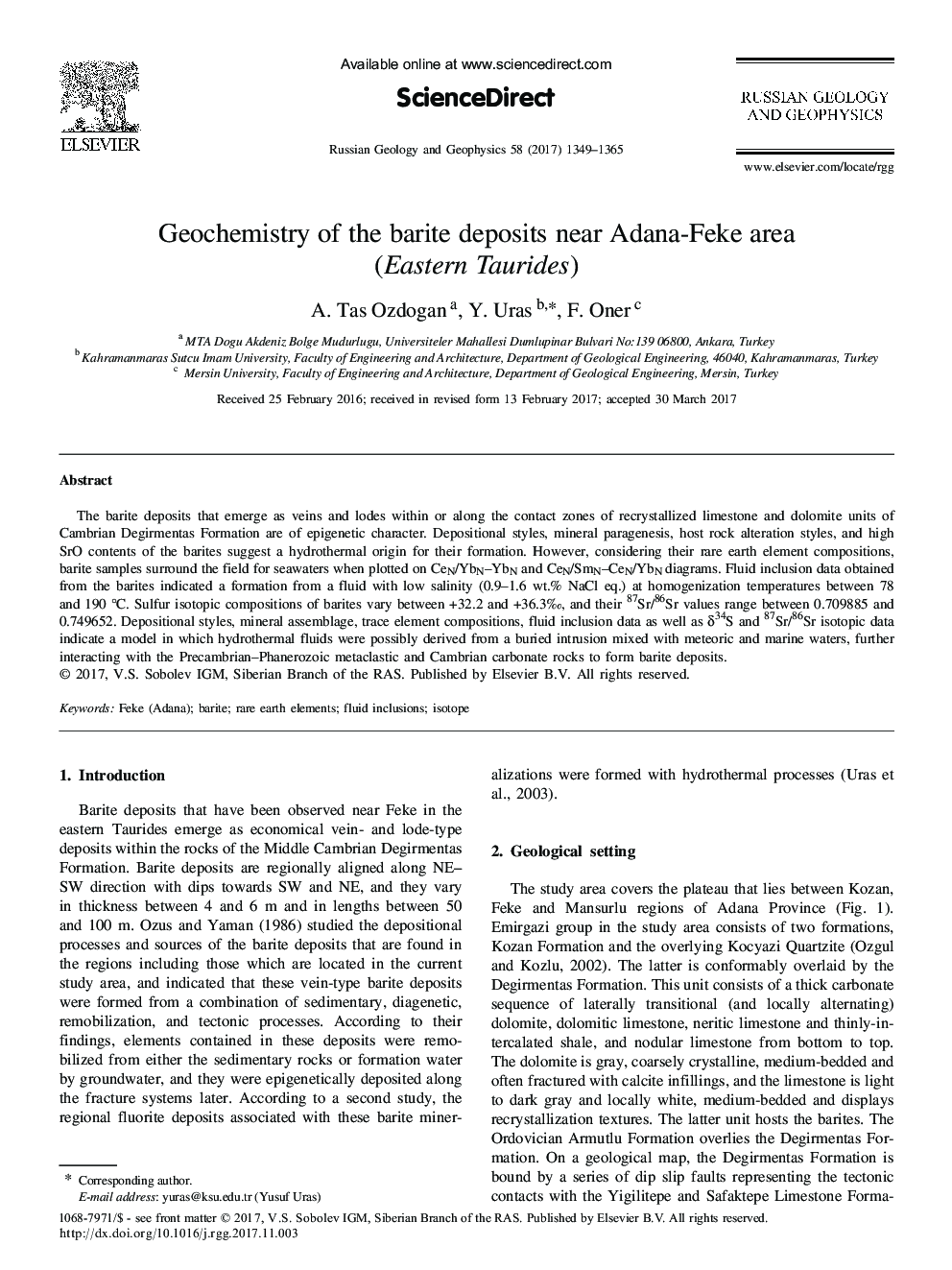| Article ID | Journal | Published Year | Pages | File Type |
|---|---|---|---|---|
| 8915252 | Russian Geology and Geophysics | 2017 | 17 Pages |
Abstract
The barite deposits that emerge as veins and lodes within or along the contact zones of recrystallized limestone and dolomite units of Cambrian Degirmentas Formation are of epigenetic character. Depositional styles, mineral paragenesis, host rock alteration styles, and high SrO contents of the barites suggest a hydrothermal origin for their formation. However, considering their rare earth element compositions, barite samples surround the field for seawaters when plotted on CeN/YbN-YbN and CeN/SmN-CeN/YbN diagrams. Fluid inclusion data obtained from the barites indicated a formation from a fluid with low salinity (0.9-1.6 wt.% NaCl eq.) at homogenization temperatures between 78 and 190 °C. Sulfur isotopic compositions of barites vary between + 32.2 and + 36.3%c, and their Sr/ Sr values range between 0.709885 and 0.749652. Depositional styles, mineral assemblage, trace element compositions, fluid inclusion data as well as δ34S and 87Sr/86Sr isotopic data indicate a model in which hydrothermal fluids were possibly derived from a buried intrusion mixed with meteoric and marine waters, further interacting with the Precambrian-Phanerozoic metaclastic and Cambrian carbonate rocks to form barite deposits.
Related Topics
Physical Sciences and Engineering
Earth and Planetary Sciences
Geology
Authors
A. Tas Ozdogan, Y. Uras, F. Oner,
